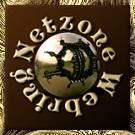![]()
Coasts
Rivers/Lakes
Lowlands/Plains
Geysers/Mud
Glaciers
Mt. Ruapehu
Mt. Cook
White Island
A Maori Legend
![]()
Abbotsford
Aramoana
Ballantynes
Brynderwyns
Cave Creek
Hawkes Bay
H.M.S. Orpheus
Influenza
Mt. Erebus
Mt. Tarawera
Rainbow Warrior
Seacliff Hospital
Tangiwai
Wahine
![]()
Annie Aves
Ata-hoe
Daisy Basham
Jean Batten
Minnie Dean
Mabel Howard
Margaret Mahy
Kath Mansfield
Kate Sheppard
Kiri Te Kanawa
Catherine Tizard
Murray Ball
Charles Goldie
Edmund Hillary
Richard Pearse
Lord Rutherford
Charles Upham
![]()
NZ FAQ--Funny
NZ Links
Credits
Note: There are various versions of this story. The information given by George Bruce in his memoirs conflicts greatly with that given by Governor Macquarie of New South Wales in an official despatch as has been noted throughout this text. 1n 1806 a northern Maori chief, Te Pahi, made the return voyage from Sydney to New Zealand on the Lady Nelson. During the course of the voyage he became ill and was cared for by George Bruce, an ex-convict who had been transported for life at the age of only ten, his crimes being various acts of petty theft. When the ship arrived in the Bay of Islands Bruce disembarked with Te Pahi. (Macquarie recorded Bruce as having deserted from the vessel). He later claimed that the next two years of his life were spent mediating between European traders and Maori and becoming a high-ranking warrior in the tribe; he was also tattooed and given the chief's daughter, Ata-hoe, as his wife. She was then known as Mary Bruce. When Ata-hoe was about 15-years-old the ship General Wellesley called at New Zealand. Her master requested Bruce's assistance to load cargo, then offered him the chance to go searching for gold dust at North Cape in the extreme north of New Zealand. This was agreed upon on the condition that Bruce and Ata-hoe were returned to the Bay of Islands after the search was completed. After failing to find any sign of gold Captain Dalrymple became impatient with waiting for suitable winds to land Bruce and Ata-hoe. He sailed for India via Malacca in Malaysia where they arrived in December 1808. When Bruce went ashore to complain about the treatment he and Ata-hoe had received, the master raised anchor and the ship left, bound for Penang and with Ata-hoe an unwilling passenger. Some weeks later Bruce followed on a gunboat only to discover that his wife had been bartered to another captain. After the governor of Penang intervened Ata-hoe was returned to Bruce and the pair went onto Calcutta and then to Sydney on board The Union. A few days out of Bengal Ata-hoe gave birth to their daughter. (Macquarie was to record Bruce as representing himself as a prince of New Zealand, and a man of consequence. It was said he obtained large amounts of money from the Bengal Government and convinced them to secure his passage ). She had little time to enjoy her baby as in February 1810, barely a month after arrival in Sydney, Ata-hoe died of dysentry having never again seen her people or homeland. Bruce chose to leave their daughter in the care of the Female Orphan School in Sydney and return to England. (Macquarie stated that Bruce was much despised and disliked in New Zealand due to his ill-treatment of his wife and neglect of her when she became ill). George Bruce dictated his version of the story of his life at the age of forty. The feelings of Ata-hoe about her experiences and being torn away from everything she knew well were never personally recorded. Her suffering at such a young age can only be imagined.
|

